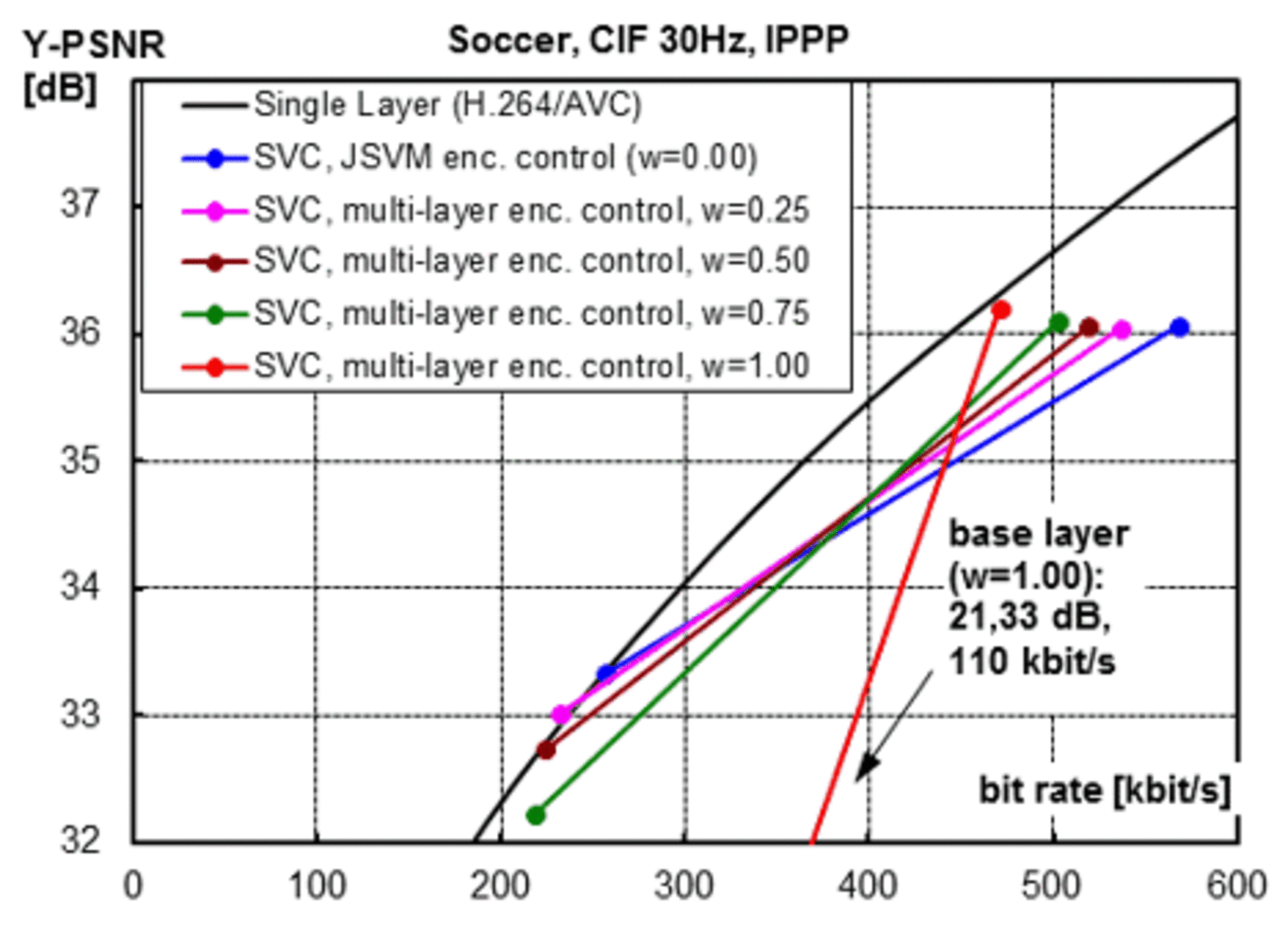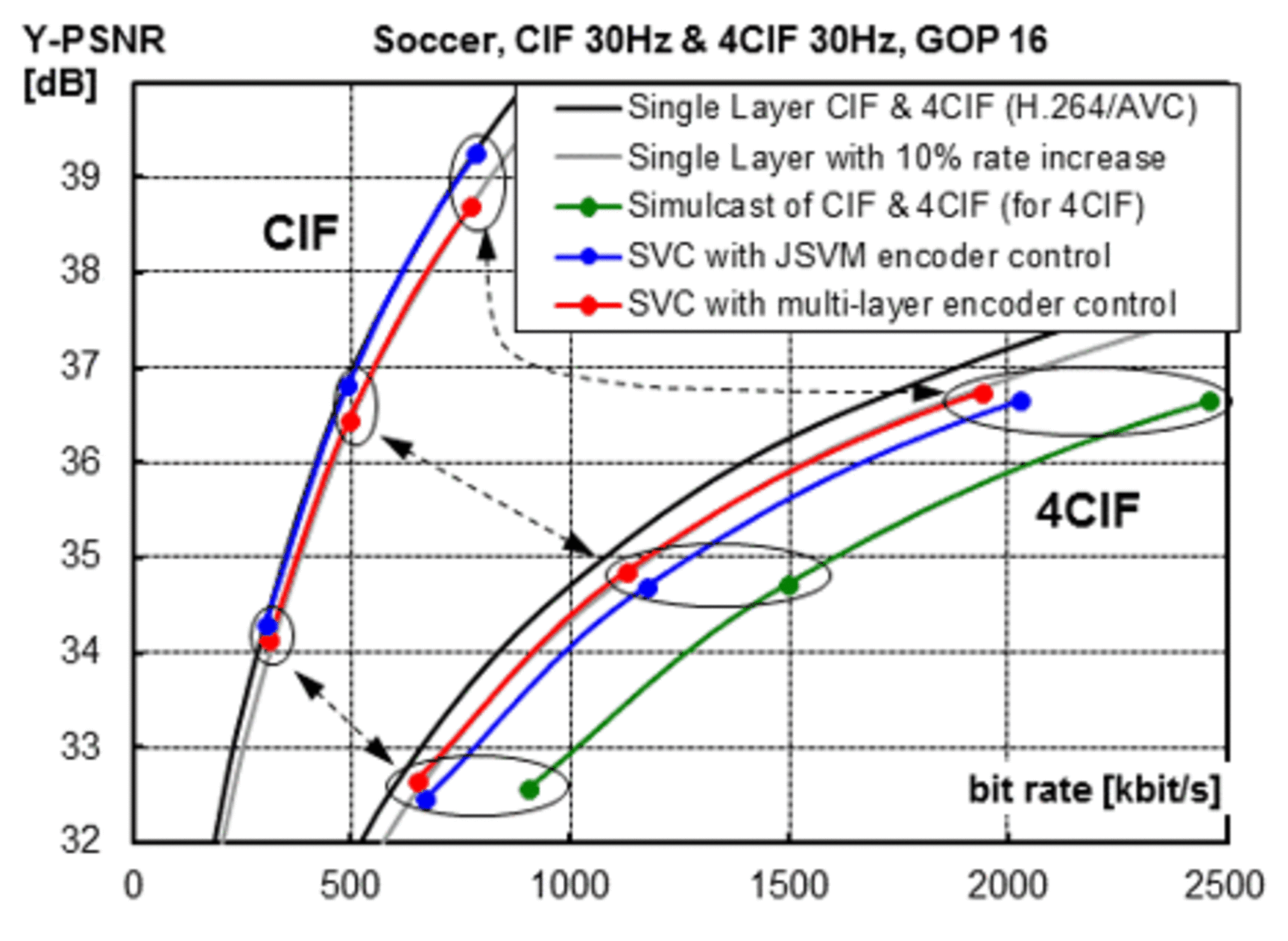The multi-layer encoder control can be used to improve the coding efficiency of an SVC enhancement layer.
The encoder control for a conventional scalable encoder makes the encoder decisions for all layers in sequential order starting at the bottom layer. For each access unit, at first the coding parameters p0 for the base layer are determined following the widely-used Lagrangian approach,
| min {p0,p1|p0} | (1 - w)(D0(p0) + λ0 ⋅ R0(p0)) + |
| w(D1(p1|p0) + λ1 ⋅ (R0(p0) + (R1(p1|p0)). |
The first and second term of this equation represent weighted costs for base and enhancement layer, respectively. The weighting factor w ∈ [0, 1] controls the trade-off between base and enhancement layer coding efficiency. By setting w equal to 0, the encoder control becomes identical to the JSVM algorithm and the base layer coding efficiency is maximized. When w is equal to 1, the base layer parameters are only optimized for the enhancement layer coding without taking the reconstruction quality of the base layer into account.
Based on the above described concept, the following decision processes have been modified:
- Mode decision
- Motion estimation
- Selection of transform coefficient levels.

Figure 1 illustrates the effect of varying the weighting factor w, which adjusts the trade-off between base and enhancement layer coding efficiency for quality scalability. A comparison of the base and enhancement layer coding efficiency for the developed encoder control and the encoder control that is implemented in the JSVM reference software is given in Figure 2 for spatial scalable coding. For the developed multi-layer encoder control the weighting factor w was set to 0.5. One important point to note is that the simulation results show that SVC can provide a suitable degree of scalability at the cost of a bit rate increase of approximately 10% relative to single-layer H.264/AVC coding for all representations included in a scalable two-layer bit stream.

References
- H. Schwarz and T. Wiegand, "Further results for an rd-optimized multi-loop SVC encoder," Joint Video Team, doc. JVT-W071, April 2007.
- H. Schwarz and T. Wiegand, "R-d optimized multi-layer encoder control for SVC," IEEE Conf. on Image Processing, 2007.
- M. Winken and T. Wiegand, "Joint rate-distortion optimization of transform coefficients for spatial scalable video coding using SVC," IEEE Conf. on Image Processing, 2008.